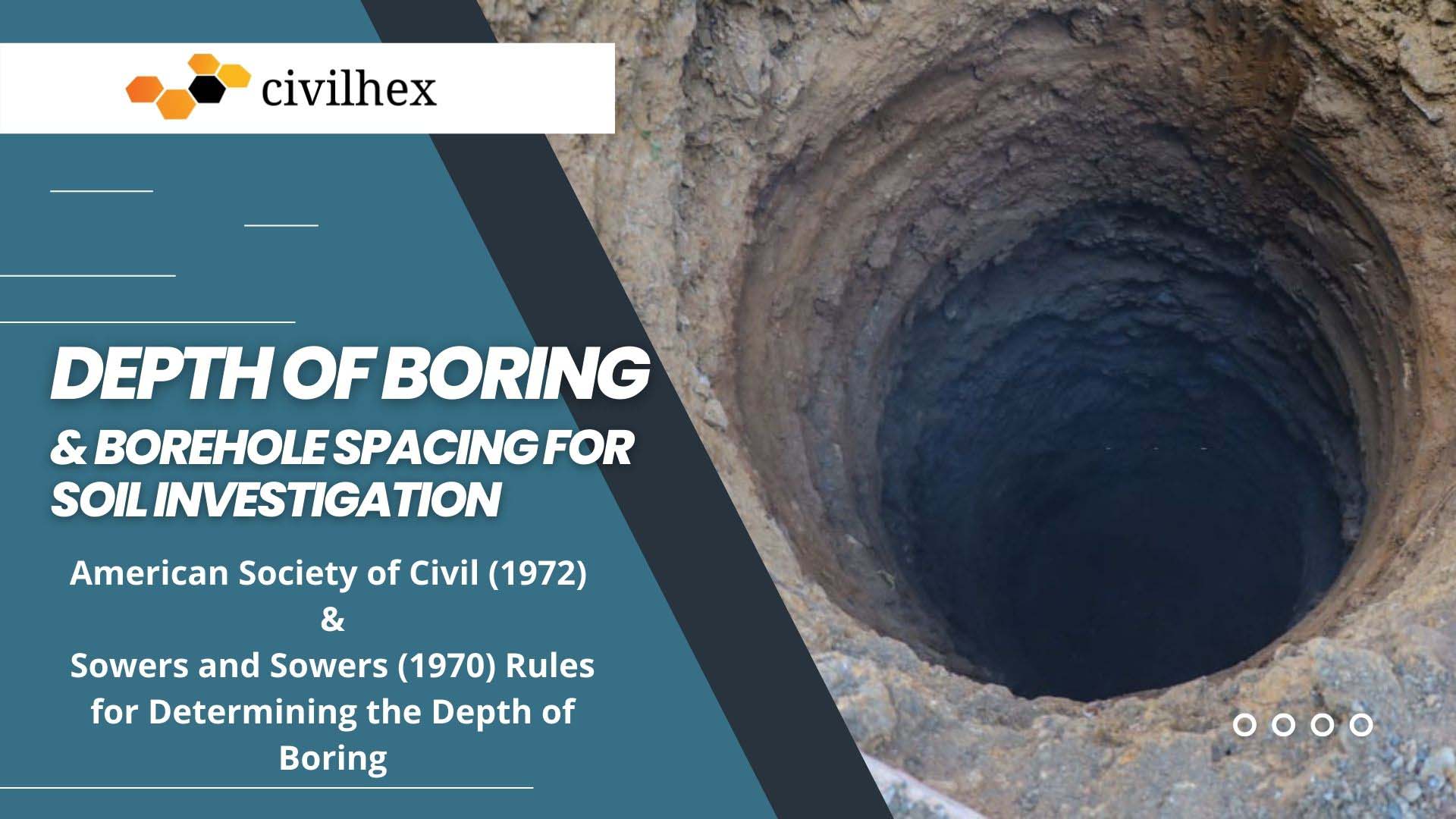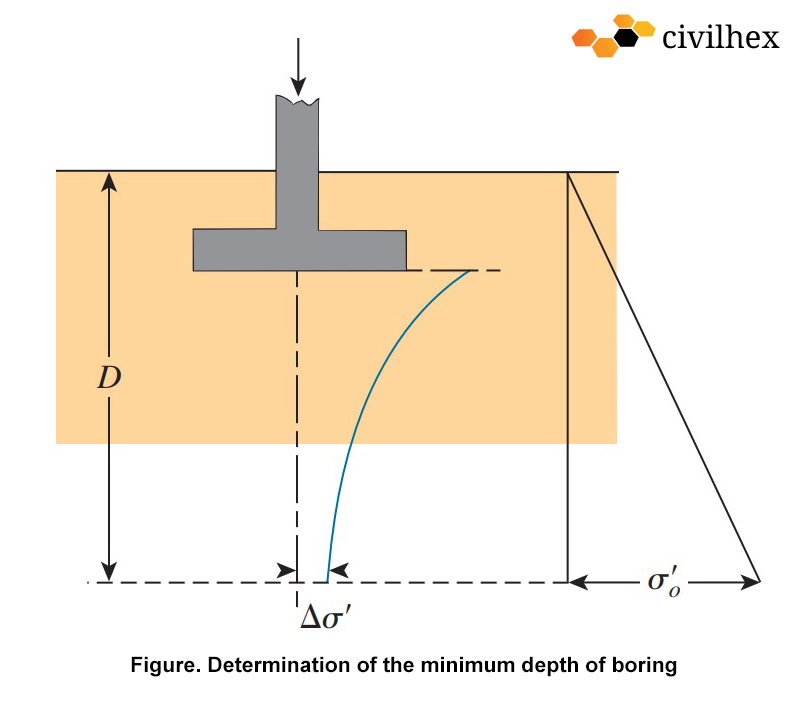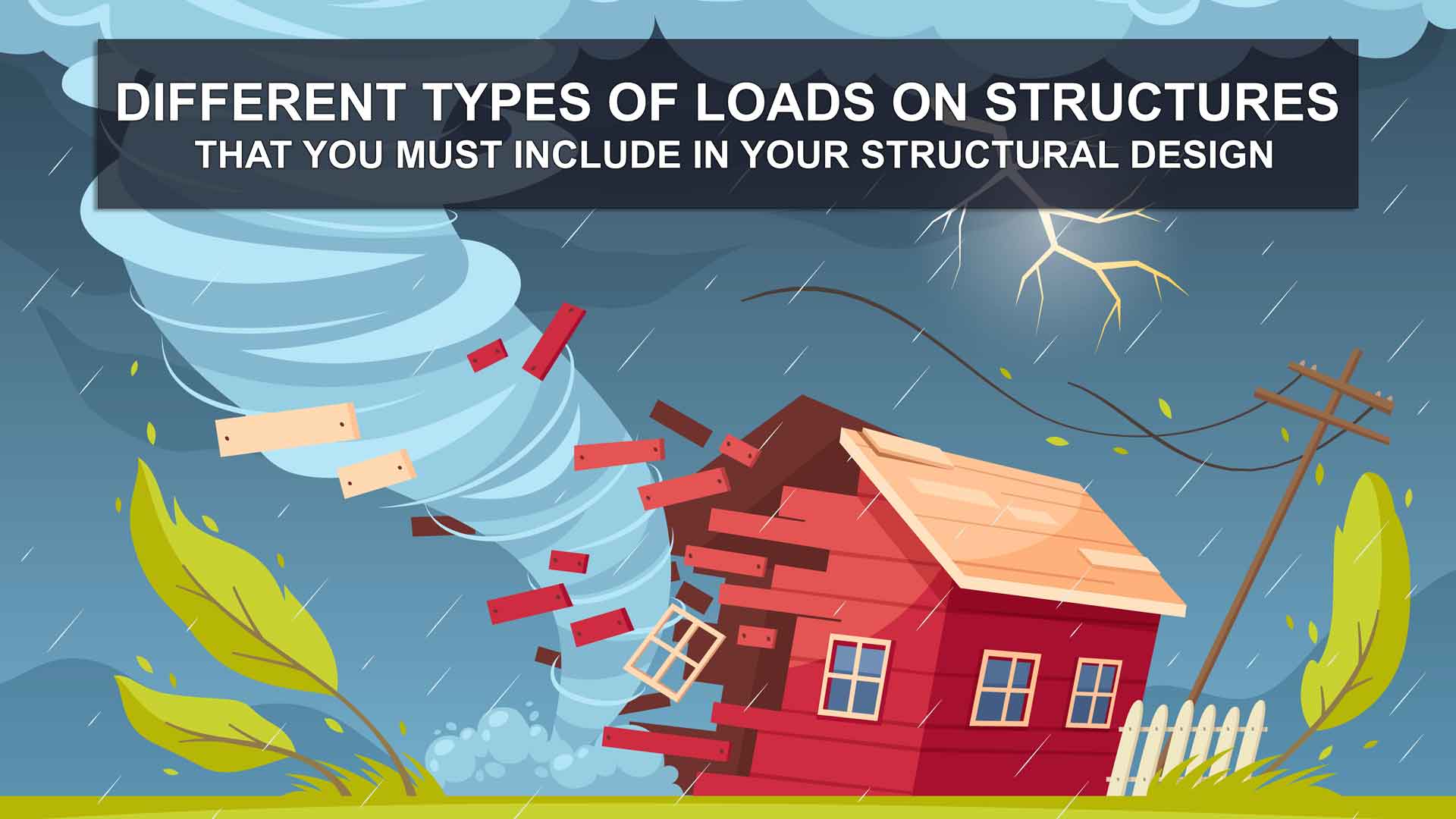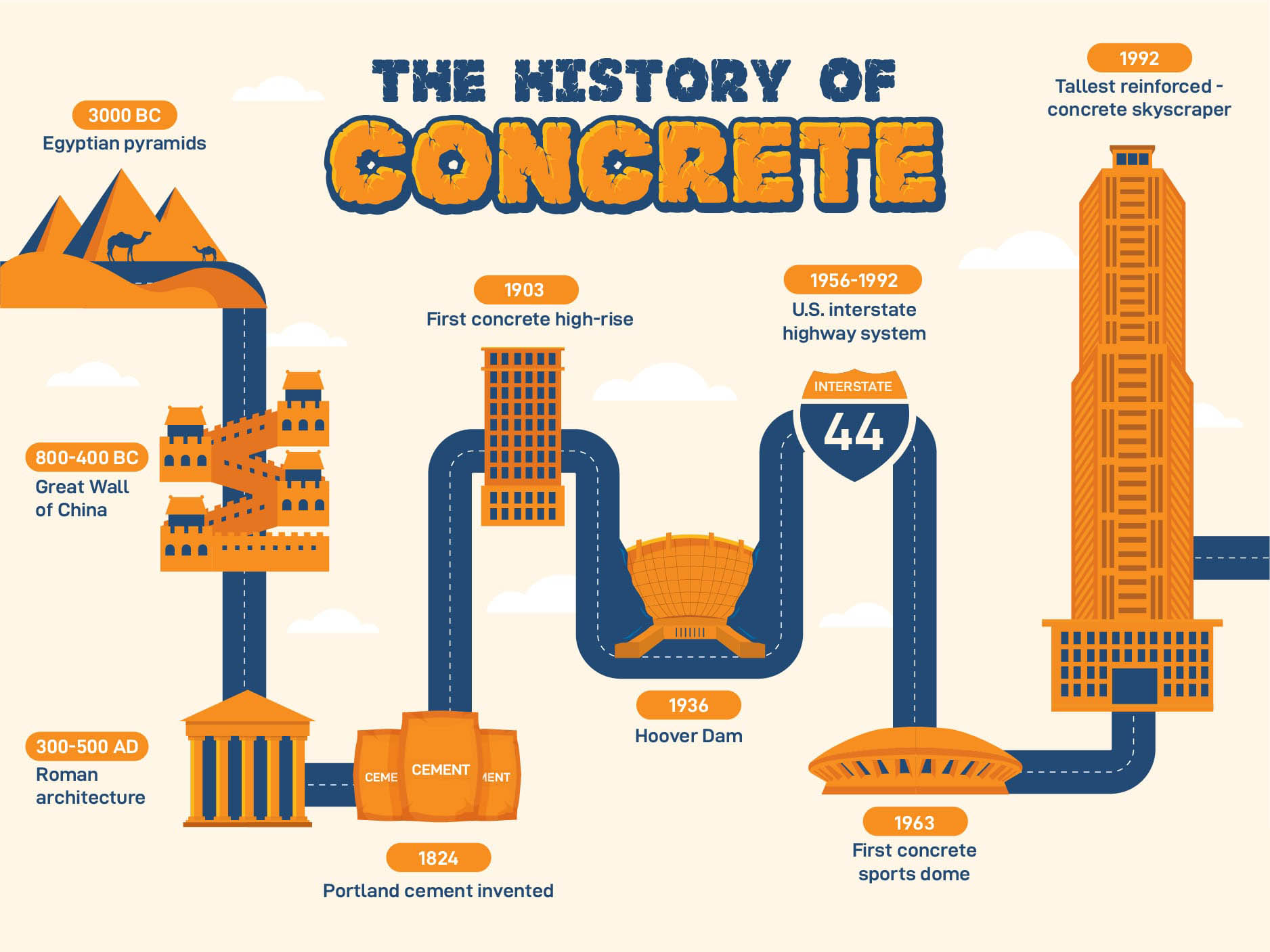Depth of Boring and Borehole Spacing for Soil Investigation

Soil investigation is a crucial process in various engineering and construction projects. It involves determining the physical and mechanical properties of soil to assess its suitability for different purposes. One essential aspect of soil investigation is determining the depth of boring and borehole spacing. This article will delve into the importance of these factors and provide insights into their significance in soil investigation.
Depth of Boring
The depth of boring is an important thing to determine before starting the boring process for soil investigation. To determine the approximate minimum depth of boring, the American Society of Civil engineers established rules in 1972 which are given below:
- Determine the net increase in the effective stress,
- Calculate the variation of the vertical effective overburden stress,
, with depth.
- Calculate the depth, D=D1, at which the effective stress increase
is equal to the
; (Here, q = estimated net stress on the foundation).
- Determine the depth as D= D2, at which
.
- Select the smaller of the two depths, D1 and D2.
Sowers and Sowers (1970) Rules for Determining the Depth of Boring
Rules 1: According to Sowers and Sowers (1970), the depths of boring for a building structure with a width of 30m will be approximately the following table:
Table: Boring depth for building structure with a width of 30m
| No. of stories | Boring depth (meter) | Boring depth (feet) |
| 1 | 3.5 m | 11.48 ft |
| 2 | 6 m | 19.68 ft |
| 3 | 10 m | 32.81 ft |
| 4 | 16 m | 52.49 ft |
| 5 | 24 m | 78.74 ft |
Rules 2: According to Sowers and Sowers (1970), To determine the approximate boring depth for hospital and office buildings structures:
- For lightweight steel and narrow concrete buildings structures:
\frac{{{D}_{b}}}{{{S}^{0.7}}}=aWhere,
Db = depth of boring,
S = number of stories,
a = 3 if Db in meters
10 if Db in feet
- For heavy steel and wide concrete buildings:
\frac{{{D}_{b}}}{{{S}^{0.7}}}=bWhere,
b = 6 if Db in meters
20 if Db in feet
Example:
Let,
- The structure will build with lightweight steel.
- Number of stories: 5
Solution:
For matric units:
\begin{align}
& \text{ }\frac{{{D}_{b}}}{{{S}^{0.7}}}=a \\
& \Rightarrow \text{ }\frac{{{D}_{b}}}{{{5}^{0.7}}}=3 \\
& \Rightarrow \text{ }{{D}_{b}}=\text{ }9.25m\text{ }(Answer) \\
\end{align}
For imperial units:
\begin{align}
& \text{ }\frac{{{D}_{b}}}{{{S}^{0.7}}}=a \\
& \Rightarrow \text{ }\frac{{{D}_{b}}}{{{5}^{0.7}}}=10 \\
& \Rightarrow \text{ }{{D}_{b}}=\text{ }30.85ft\text{ }(Answer) \\
\end{align}
The minimum depth of boring is required 9.25m or 30.85ft.
When deep excavation is anticipated, the depth of soil boring should be at least 1.5 times the depth of excavation.
Sometimes is required to transfer foundation loads directly to the bedrock. The minimum depth of core boring into the bedrock is about 3 meters deep. If the bedrock is not uniform, then the core borings may have to be deeper.
Borehole Spacing – Approximate Spacing of Boreholes
There are no standard rules and regulations for borehole spacing. However, below the table gives some general guidelines for borehole spacing:
Table: Approximate Borehole Spacing
| Type of Project | Spacing (meter) | Spacing (feet) |
| Multistory building | 10 – 30 | 32.80 – 98.42 |
| One-story industrial plants | 20 – 60 | 65.62 – 196.85 |
| Highways | 250 – 500 | 820.21 – 1640.42 |
| Residential subdivision | 250 – 500 | 820.21 – 1640.42 |
| Dams and dikes | 40 – 80 | 131.23 – 262.47 |
Depending on the soil conditions, borehole spacing can be increased or decreased. The engineer also considers the ultimate cost of the structure when making decisions regarding the extent of field exploration. The soil exploration cost is generally between 0.1 to 0.5% of the cost of the structure. There are different types of soil boring available such as auger boring, wash boring, rotary drilling, and percussion drilling.
Reference:
Principles of Foundation Engineering (Ninth edition, 2019), “Braja M. Das, University Sacramento”, “Nagaratnam Sivakugan, College of Science & Engineering James Cook University”






Responses